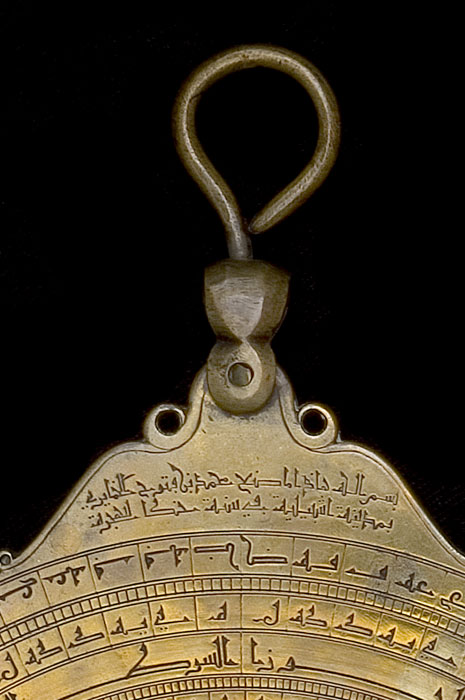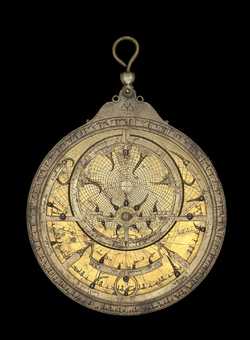From thirteenth-century Spain
An inscription tells us that this instrument was made 'in the city of Seville in the Hijra year 621'. The Hijra was the migration of the Prophet Muhammad and his followers from Mecca to Medina, and is taken as the beginning of the Islamic calendar. Converting to the Christian calendar is not entirely straightforward, since the Islamic calendar is based on the moon and there are various different schemes for adding leap days. In this case the A.H. (after Hijra) date for the astrolabe converts to 1224 or 1225.


Astrolabe, by Muhammad ibn Fattuh al-Khamairi, Seville, 1224/5 (Inv. 50934)



